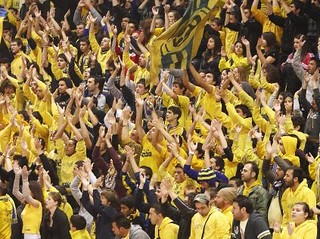
Back in 2012, when Creating the Future had just wrapped up its 3rd successful scholarship campaign at StartSomeGood.com, we posted a “lessons learned” post, to share what was standing out for us from that campaign.
Fast forward to today, we are now in the early planning stages for our 4th crowdfunding effort in early 2016. It feels only right to begin that journey by reviewing the basics we’ve learned so far. And so, below is a reprint of that original 2012 post.
As always, we hope you will take a moment to share in the comments: What have you learned from your own crowdfunding efforts?
Lesson #1: It’s Not Really CrowdFunding; It’s PEERfunding
There is a misconception in the world of fundraising that “crowdfunding” is a way to get masses of people to invest in your work. And as the folks at StartSomeGood point out, that is just not so.
“This is often referred to as “crowdfunding” but we resist this definition as we think it gives an erroneous impression that there is a crowd out there just waiting to shower your idea with money.
In fact, what’s happening is groups leveraging and growing their existing communities — their peers — by inviting them to become partners in igniting change.
Therefore, StartSomeGood is a peerfunding site – a platform for gathering a community and raising the funds needed to create change.”
Lesson #2: The Message to Peers vs the Message to Crowds
While we have intellectually understood this subtle difference between “peerfunding” and “crowdfunding,” we experienced this difference firsthand during this campaign.
First, we noticed the difference when we asked people we respect for their thoughts about the video we prepared for our campaign.
Here is a comment from someone who has been deeply engaged with two of Creating the Future’s programs for over a year – the NPCons twitter chat and the Facebook group for consultants.
“I liked the video very much. I found one story especially compelling – the story about changing the question from “addressing the problem” to asking what is possible. For me that story is an easy way for someone who may not totally understand what Creating the Future is about to “get it”. It’s also a concrete example of one of your tools, something that made me sit up and say ‘Hey! There’s something to this Creating the Future thing!’.”

On the flip side, here is a comment from someone who is familiar with our work, but who isn’t as deeply engaged and excited by the vision of what we’re working to accomplish.
“I wasn’t compelled to give nor did I know what my gift would actually be doing to change the world.”
Two completely opposite reactions, based entirely on the degree to which someone already gets what we’re about at the core – the degree to which someone is already an active participant in our programs and philosophies… a peer.
We got another dose of this lesson as we tested responses to messaging – an easy thing to do when you are messaging all day every day on social media for a full week.
When our message was for general consumption (e.g. “Help changemakers learn how to change the world” or similar messages), we received barely a handful of notes from people asking how exactly we are doing what we do. Importantly, a) those people did not donate, and b) there are more effective ways of engaging that conversation, if that was the goal.
However the message that resonated the most deeply was a message that only those in our existing circles would appreciate: “If you have benefitted from any of Creating the Future’s programs, please pay that forward, to help someone else benefit as you have.”
While the “pay it forward” message understandably had zero effect on people outside our existing circle, the interesting thing to us was that the opposite was also true – the broader externally-focused message had virtually no impact on our existing circle.
The effective campaign was therefore not about changing the world, but about our existing community wanting to share what was already powerful for them – their desire to broaden the circle. The words of the StartSomeGood team rang true: “What’s happening is groups leveraging and growing their existing communities — their peers — by inviting them to become partners in igniting change.”
And clearly, how that focus on “peers vs. crowds” translates into messaging will make a big difference in a campaign’s success.
Lesson #3: Where to Find Peers
Creating the Future’s education programs are all rooted in practical experience. Our M.O. has always been to experiment, see what works, then teach that. There is nothing any of us teach or write about that we haven’t used successfully ourselves.
It is therefore always fun for us to come back to those approaches we now teach, and put them to use once again for our own efforts!
The tool we used the most was the Life List Generator from my book on FriendRaising – questions that prompt us to remember the long list of people who are already connected to our work. We also used a ripples-in-the-pond exercise that we teach in our workshops and workbooks, asking whose lives are touched by our existing programs, and then seeing whose lives are touched by those people, and etc.
As they always do, those tools proved to be both effective and empowering. And as teachers, that is not only reassuring, but downright fun!
Lesson #4: Go Fast, Go Strong and Go Home
When we’ve done campaigns in the past, we’ve allowed ourselves the maximum time – 90 days – thinking that would give us as much time as possible to build support. Every time, however, the heavy lifting happened in the first week and the last week.
 So this time, we eliminated the dead time in the middle, and just pushed hard for about 10 days – constantly adjusting our messaging, testing results, and then pushing hard again.
So this time, we eliminated the dead time in the middle, and just pushed hard for about 10 days – constantly adjusting our messaging, testing results, and then pushing hard again.
The work was the same. The results were the same. And we didn’t suffer from people getting tired of hearing about it (or from us getting tired of talking about it!).
Which leads to…
Lesson #5: Race for the Finish: Making it Happen
Message is important. Peers are important.
And then there is this thing inside us humans that has 100% to do with “making it happen.”
The most powerful message for getting people to pitch in – far beyond any mission-based message – was “We are only $X away from $2,000.”
This has been an important lesson beyond fundraising for us, as Creating the Future’s R&D work in the area of Philanthropy focuses on the sustainability of not just organizations, but whole communities. Clearly, beyond the dollars and the issues and the mission, we humans have this need to “make it happen.”
Which raised the mission-focused question, “What does this realization about human psychology make possible for how the quality of life in communities can be sustained?”
It is indeed far easier to ride a horse the way it’s going. If we can acknowledge and work with this particular insight into the human psyche, perhaps we can begin leveraging that deep desire to make it happen, to bring people together in a spirit of abundance. Because there is so much we can accomplish together that no one person or group can accomplish on their own.
Bonus Lessons
Two more lessons. The first isn’t as much a lesson as a whole mini-class – a practical step-by-step workshop presented by Tom Dawkins, co-founder of StartSomeGood.com. Bookmark this, and watch it when you can take notes and absorb. We haven’t found a better Crowdfunding 101 workshop anywhere.
And the second is an invitation for YOU to share what YOU have learned in your own crowdfunding peerfunding efforts. What has worked for you? And what have you learned from what has NOT worked for you? We will share all your comments with the folks from StartSomeGood, so it can help all the efforts that use their platform to – well – start some good!
Special note: We extend a very warm thank you to Tom Dawkins of StartSomeGood.com, for the ongoing support you have showed for Creating the Future’s work. It’s an honor to be on this journey with the StartSomeGood team by our side.
Photo Credits: Wikimedia commons

I learned a lot about “peerfunding” (great name) from being a kickstarter in the Exploding Kittens card game (www.explodingkittens.com). They had a 28 day campaign, I believe, and raised their goal ($10K) in a few minutes and had over $8 million by the end.
The “dream team” behind the game was The Oatmeal, a web cartoonist with a massive following (3.5 million Facebook likes) and Evan Lee, a well-respected game designer in the gaming world. Plus kittens. Lessons learned:
1. Build a following among peers. Both of these groups have many “niche” fans like to be in touch with everything “their” person does.
2. Understand your peers really, really want the chance to back something cool that you put out in the world. And they want to share your cool thing with their own networks.
3. Know your audience. I deeply wanted to see the Oatmeal draw lots and lots and lots of kittens.
The other main thing they did was keep the momentum up after their unexpected early success. What do you do when you blow past your goal in the first few minutes of a 28-day campaign? Create stretch goals and get the community actively engaged beyond their money. After a while, the team really didn’t want more money, since more money meant more orders and they were already forced to change a 1000-unit run to a 500,000-unit run – several orders of magnitude higher in logistical complexity!
So we earned stretch goals by posting pictures of our cats wearing tacos, or ourselves with goats (I snuck onto a local farm to get my selfie), or groups of people in batman masks. It was fun, it was community building, and it kept everyone very excited about being a key part of campaign success.
They did lots of other things right, but those were a few of my main takeaways. 🙂
This is awesome, Stacy. It has my wheels turning on all sorts of cool ways to engage people and build community. LOVE it! HG